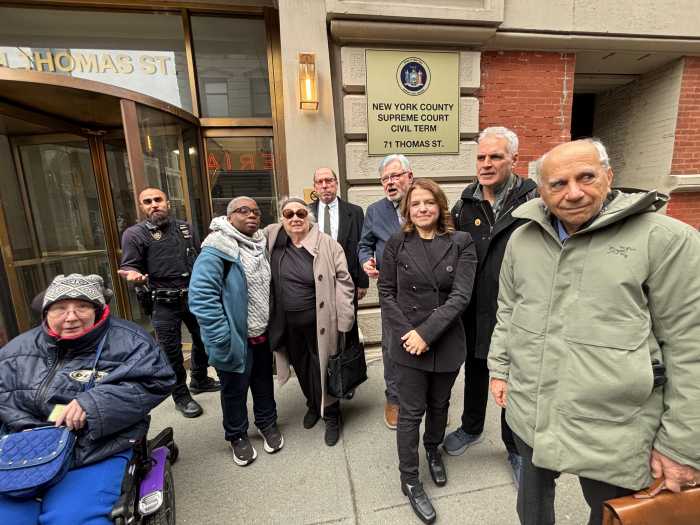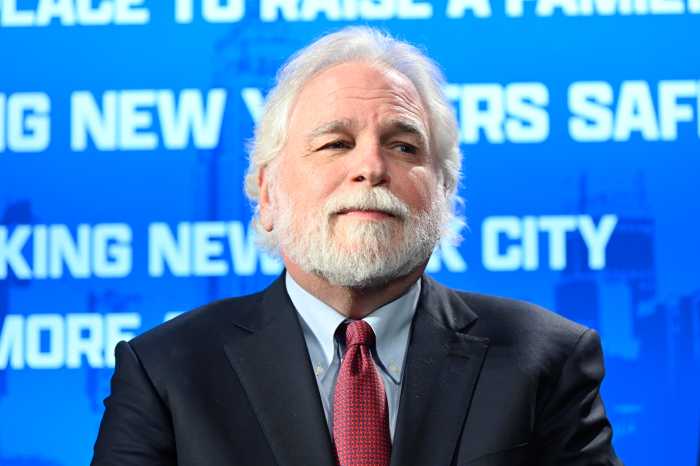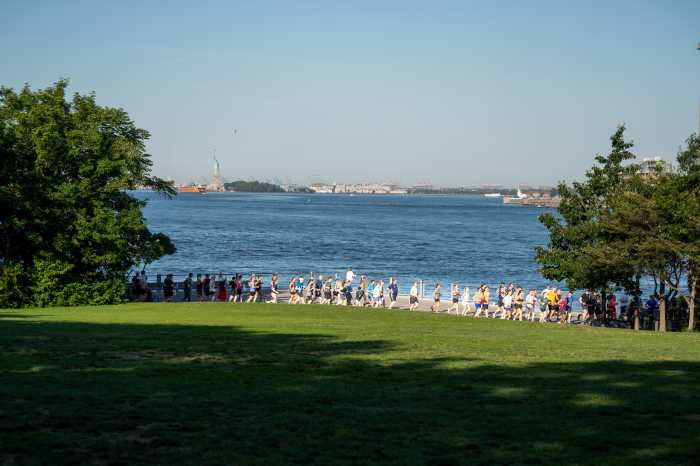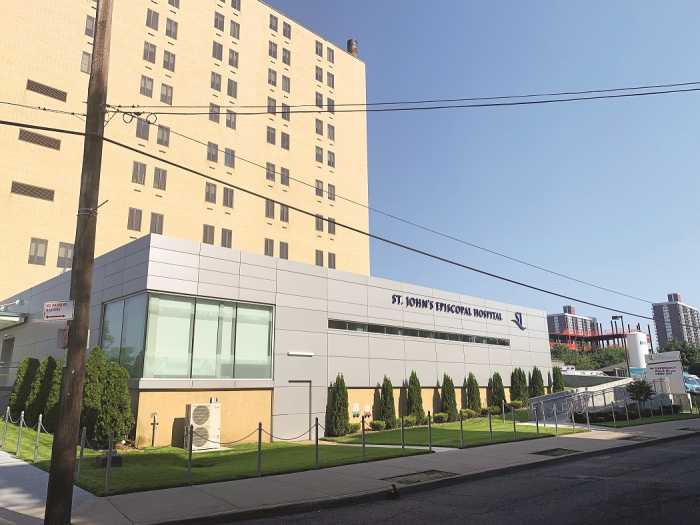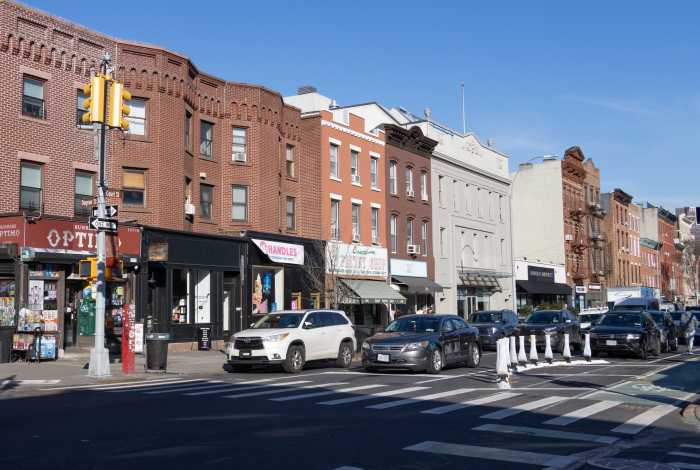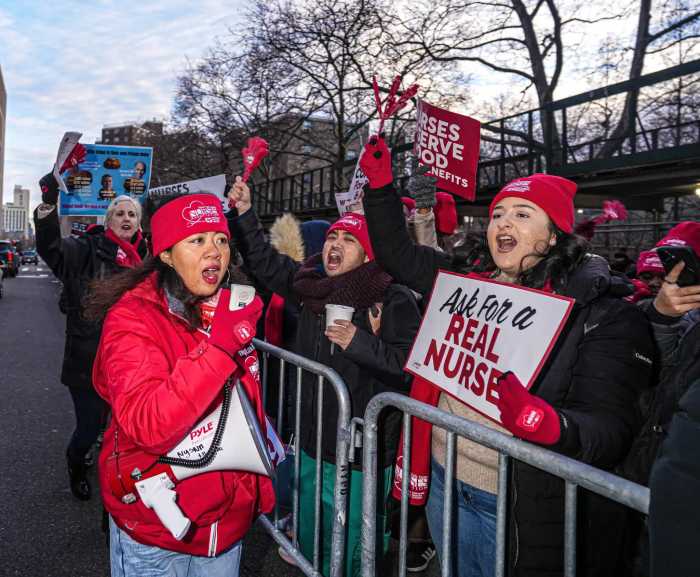
Passers-by stepped into a single-file line where the sidewalk narrows on Bedford Avenue and briskly walked past the construction fence in front of Goorin Bros. Hat Shop last weekend.
The sidewalk is so thin that the staff has not been able to set up the shop’s advertisement board since crews began revamping entrances to the Bedford Avenue L train station this November, according to its manager, Shanice Brown. Even when passers-by notice the hat purveyor, the construction din often drives them away, Brown said.
“It’s just been really frustrating, but we’re making the best of it,” Brown said. “We’re just trying to really tighten up our community base before it shuts down so we just feel stronger, because it’s going to affect everybody.”
The hat shop is one of a handful of businesses in Williamsburg concerned about the L train shutdown driving down sales. The MTA plans to suspend L train service between Brooklyn and Manhattan for 15 months, beginning in April 2019, so crews can repair the Canarsie Tunnel, which superstorm Sandy damaged in 2012.
Although L trains will still run between Rockaway Parkway and Bedford Avenue, many retailers and restaurateurs are bracing for a plunge in patrons. Several say they will feel the loss of tourists, who tend to ride the L in from Manhattan, and in some cases account for half of establishments’ customers.
A few entrepreneurs worry their local clientele will relocate to parts of Brooklyn served by other train lines — or revise their commute in a way that makes stopping by inconvenient. Some reported already swallowing more than 10 percent slumps in sales because their entrances have been blocked as crews revamp entrances to the Bedford Avenue station.
Construction obstacles cut into cash
Since that work got underway in November, sales at Goorin Bros. had fallen at least 465 transactions behind where they were in 2017, Brown said earlier this year. She estimated the 181 Bedford Ave. store was down $35,000 as of May.
Half a block away, Baglesmith’s business had tapered off by 35 to 40 percent since construction started, its owner, Paul Furtaw, said earlier this year. Furtaw said the dip was also due to several of his longtime costumers deciding to move out of the neighborhood.
Physical barriers from the construction also helped whittle away 10 to 15 percent of Northside Pharmacy’s business at 559 Driggs Ave., according to its owner, Halina Jankowski.
“I have to say I’m getting very nervous,” Jankowski said, adding that since many customers will no longer use the Bedford Avenue station, it may no longer be easy for them to fill prescriptions with her. “Convenience is the No. 1 item.”
Bracing for a break in tourist traffic
Fellow business owners harbor similar fears. About two-thirds of enterprises indicated they expected to lose up to half of their business if the MTA had shut down the L train for 18 months, as was initially proposed, according to a 2016 survey conducted by the North Brooklyn Chamber of Commerce.
One retailer, Erika Vala, said she was considering moving her Shoe Market shop to a location near other train lines for the 15-month closure. About half of the 160 N. Sixth St. store’s customers are tourists and Vala said she does not expect them to keep streaming in from Manhattan when the L train is down.
Brooklyn Brewery co-founder Steve Hindy shared her concerns, noting that weekend L train shutdowns have previously cut down the 79 N. 11th St. business’ revenue by about a quarter. To compensate for an anticipated decrease in foreign tourists — who currently account for about 50 percent of the brewery’s business — Hindy plans to extend weekday hours.
Liquor distributors reported that orders from local businesses fell anywhere from 10 to 40 percent in 2015 when the subway was shut down for five weekends, according to Scott Davis, who owns Teddy’s Bar and Grill at 96 Berry St.
Davis said tourists amount to about 20 percent of the customers at Teddy’s, which is marketed as the oldest continually-operated bar in the borough. Although he expects to welcome fewer of that demographic, Davis believes that drop-off may be cushioned by a bump — perhaps 10 percent — in local patrons who spend more time in the neighborhood.
“There’s no reason to assume it won’t impact here — the magnitude is the question,” Davis said. “Anybody that opened in the last two years — I think it’s going to kill a lot of them. They came in at the highest rents. And usually the first year, year-and-a-half, you don’t make any money; you’re just trying to pay startup costs.”
MTA spokesman Shams Tarek said the authority has worked with businesses to display their signs on construction barriers and taken other steps to assist Williamsburg retailers.
“We’re working hard to address the needs and concerns of our neighbors along the L line and are in the midst of a concentrated effort to develop creative and effective ways to help local businesses,” Tarek said in a statement. “We’ve held regular meetings with the L Train Coalition, which includes local businesses, as well as dozens of public meetings where we received input, and will be moving ideas ahead with stakeholders in the coming weeks.”
Retail real estate reacts
Business challenges have contributed to a roughly 10 to 15 percent curtailment in retail rents in Williamsburg since the L train shutdown was announced, according to Michael Salvatico, vice president at Marcus & Millichap, a commercial real estate firm.
Salvatico said retail rents may drop another 10 to 15 percent, foreshadowing a spurt in empty storefronts. Owners who recently purchased their buildings may not be able to convince lenders to let them slice rent enough to lure in tenants, Salvatico said. For them, leaving the space vacant for two years until L train service is fully restored may make more sense than inking the traditional 10-year lease when rent rates are depressed, according to Salvatico.
“The issue will be the guys who recently bought,” Salvatico said. “You’re going to see that those buildings stay vacant because the banks won’t let them lease the property out at $150 per square foot when they projected out $300 or better. I do think that vacancy will probably hold.”
Employee commutes pose problems
Even when customers continue coming, businesses on both sides of the East River are worried about keeping employees during the shutdown.
About 75 percent of personnel at Williamsburg businesses commute on the L, according to the North Brooklyn Chamber of Commerce’s survey. At Teddy’s, just three of the bar’s 32 employees live within a mile of the business, Davis said. Many live in Queens or the Bronx and Harlem and transfer to the L at Union Square, he said.
“That’s the more challenging one because I can find strategic ways to get customers here. I can’t make my line cook get on the subway and take a different line unless I pay him higher. And then you’re like, well, it’d be better to knock 10 hours a week off my operating time,” Davis said. “That’s probably my biggest worry.”
Julie Horowitz, owner of Duck’s Eatery in the East Village, said that half of her dining room staff commutes by L train.
Relocating was never a question for Logan Mikhly, who lives in Williamsburg and founded a dog-friendly cafe called Boris & Horton in the East Village.
“It’s just not possible to stay in Williamsburg with the transportation options,” said Mikhly, who plans to move to lower Manhattan. “I’d like to get a jump on it before there’s a mass exodus.”



